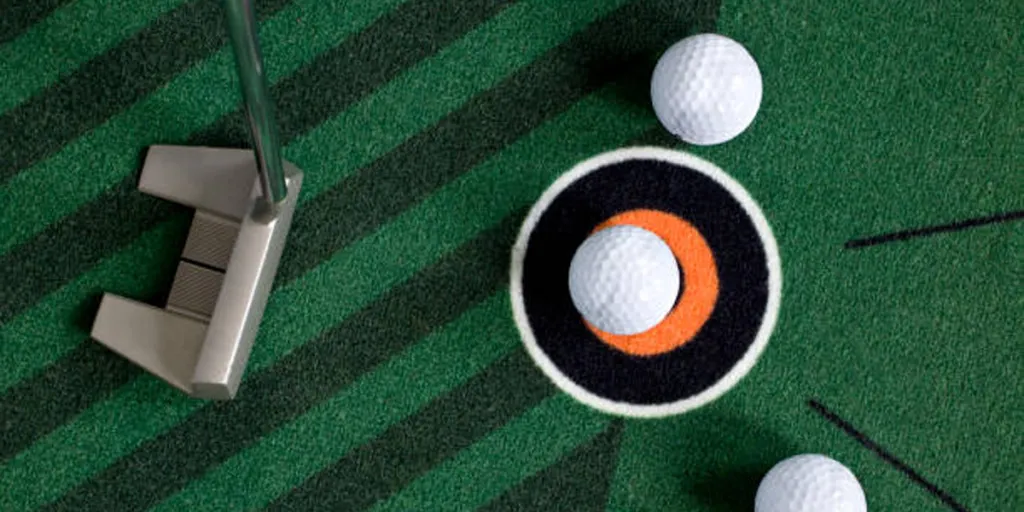In golf, putting is an essential shot that can make or break a round of golf. Having putting mats readily available to practice on, whether for professional athletes or for amateurs, is the perfect way to hone a skill without playing an entire round of golf.
This guide will take a look at the most popular types of golf putting mats among consumers today, as well as the key features of each style and what makes them such a big hit. Keep reading to learn more about these useful golfing tools.
Table of Contents
Overview of the global golf equipment market
Types of golf putting mats
Conclusion
Overview of the global golf equipment market
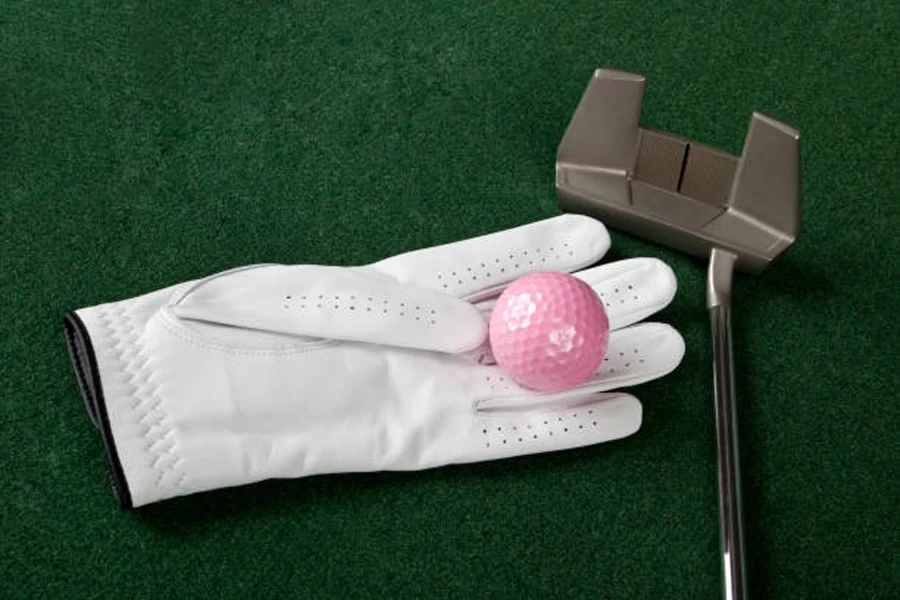
In recent years, there has been a rise in the number of golf courses being built in high-income countries, as well as an increase in golf tourism globally. The industry is also seeing more women participating in the sport, which in turn has created a higher demand for all types of golf equipment and accessories, such as putting mats and golf trolleys.
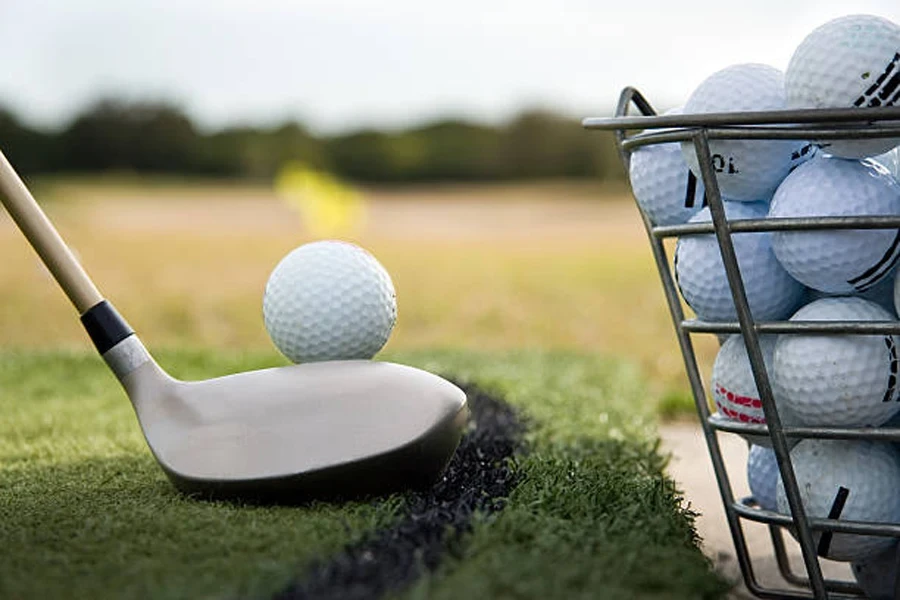
By 2023, the global market value of golf equipment reached over US $7.5 billion. In the coming years, between 2023 and 2030, that number is expected to grow at a compound annual growth rate (CAGR) of 5%.
Types of golf putting mats
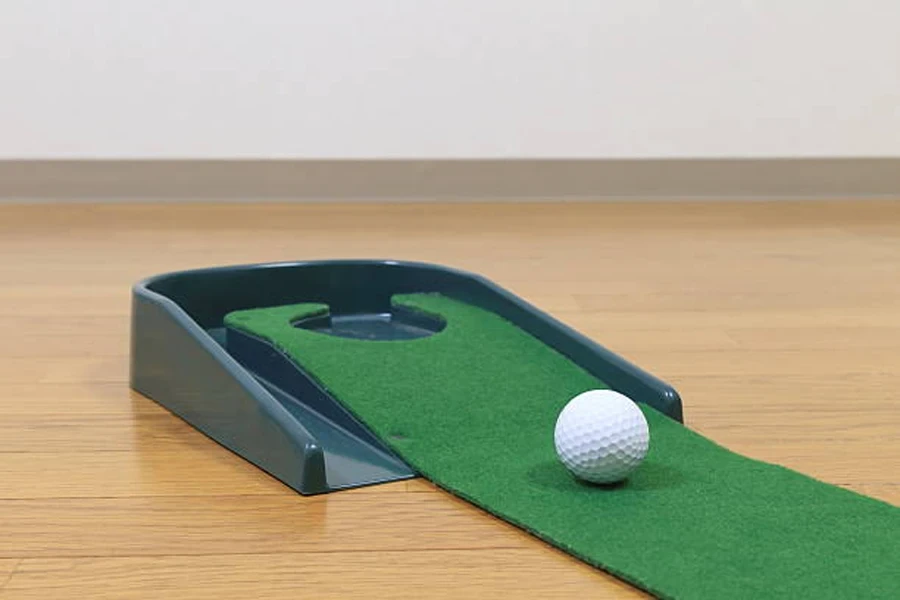
Golf putting mats are an easy tool to use, but there are various styles now on the market that work in different ways to enhance a player’s putting abilities. Whereas some putting mats are designed for heavy use in public spaces, others are designed for individual use with portability and limited space in mind.
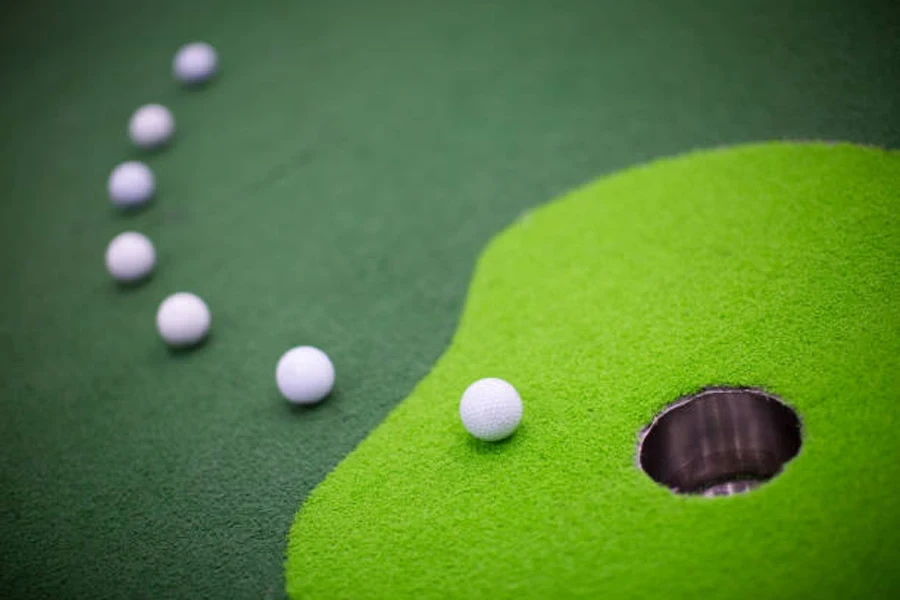
According to Google Ads, “putting mat” has an average monthly search volume of 14,800. The most searches come in January and December, with 27,100 and 22,200 searches, respectively. For the remainder of the year, searches remain steady, with approximately 12,100–18,100 searches per month.
When looking at the types of golf putting mats that are the most popular with consumers, “indoor putting green” comes out on top with 14,800 searches. This is followed by “artificial putting green” with 5,400 searches, “portable putting green” with 720, and “putting mat with ball return” with 390 searches. Keep reading to learn more about each of these golf putting mats.
Indoor putting green
Indoor putting greens are invaluable tools for players of all abilities, as they allow them to refine their putting skills. Putting greens come in different sizes, meaning they can be long strips of artificial grass or take up the entire room—it all depends on the space available. Foldable greens are popular with consumers who have limited space and want a convenient storage option.
The material used for indoor putting greens needs to replicate the feel of real grass, so materials such as synthetic grass or artificial turf are both popular options. The blades of the turf are made of materials such as nylon to ensure durability and a realistic appearance. The base of the indoor putting green needs to provide a cushioned effect, so materials such as foam or rubber are often used.
More advanced versions may include features such as alignment guides, adjustable slopes to create a more challenging putting experience, and speed ratings to show how fast the ball will move along the green. They should all include a cup and flag that mimic a regulation golf hole.
Artificial putting green
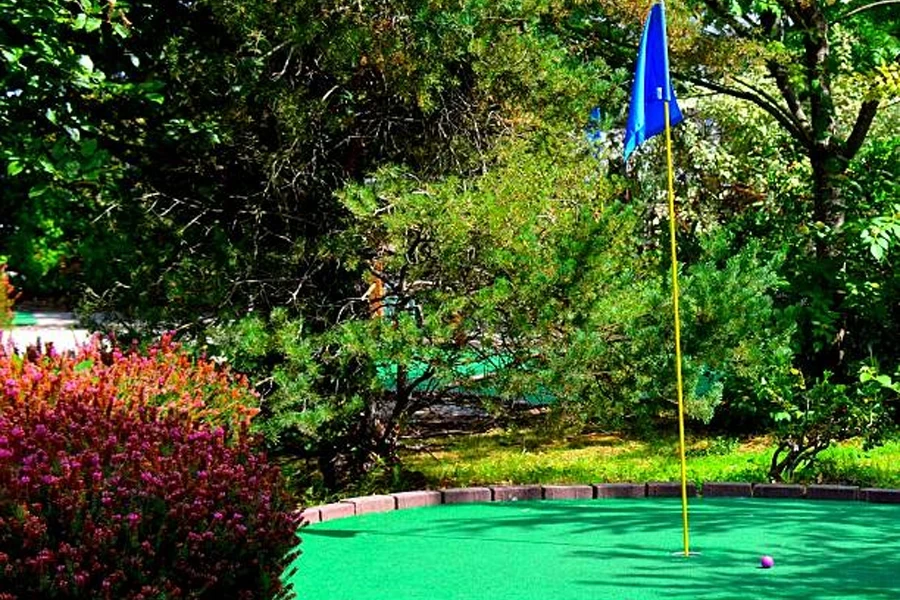
The artificial putting green is the perfect outdoor training companion. It offers golfers a realistic way of practicing their putting skills in a weather-resistant setting. Since this putting green is meant for outdoor use, it’s important that it’s made of a high-quality artificial turf that also offers UV resistance, with materials such as nylon and polyethylene being popular choices.
This synthetic turf should have a short blade height, a consistently smooth surface, and a base material that offers shock absorption as well as a cushioning effect, such as rubber or foam. The green needs to be able to withstand repeated use without showing excessive signs of wear, so having a stable infill material like silica sand is important for supporting the blades.
Consumers will also want an artificial putting green that has a good drainage system built into it. This will allow water to pass through the green without causing puddles, and it will also help with the overall longevity of the surface.
Other key features of the artificial putting green include reinforced seams that can withstand consistent use over time, a realistic putting cup that imitates the one found on a real golf course, slopes and contours built into the design or panels that can be removed so players can practice with different putting conditions, and easy installation.
Portable putting green
For consumers who don’t have a lot of extra space, the portable putting green is the perfect option. It allows users to be more flexible and practice their putting skills from wherever they like. The lightweight and compact design of these putting greens makes them incredibly easy to transport as well as store away.
Portable putting greens are often designed to either roll up or fold, and they are durably made with reinforced seams that allow for extended use over time. The materials used can vary, but either polyethylene or nylon are the most common and realistic.
This type of golf putting mat should have a non-slip backing made of rubber or foam so that it stays in place when being used. Any elevated surfaces are often formed using a sturdy plastic material in order to guide the ball to the hole.
These greens are available in different sizes as well as with adjustable slopes, so users are able to vary their sessions accordingly. In some cases, they also include additional accessories, such as a carrying case and target lines.
Putting mat with ball return
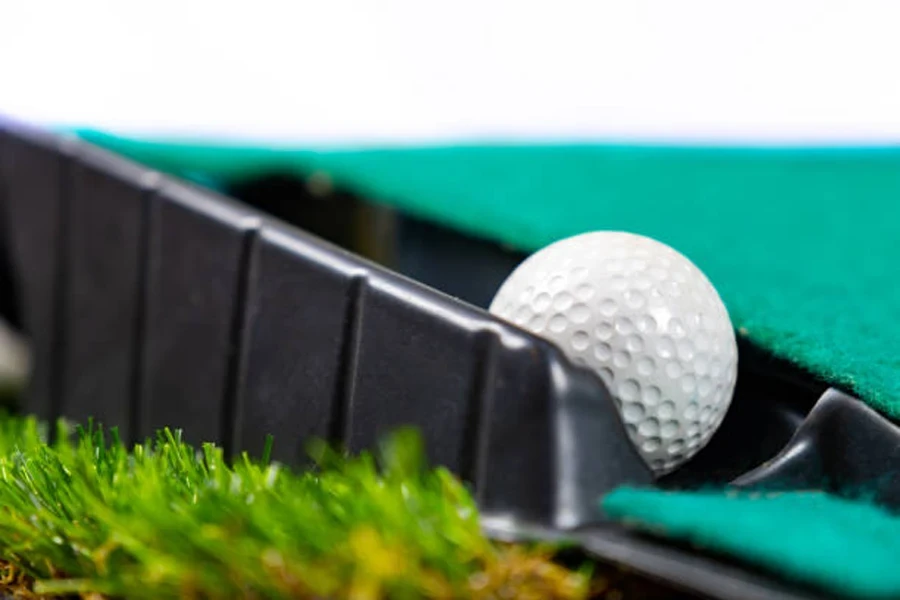
The putting mat with ball return eliminates the need to manually retrieve the ball. The built-in ball return system saves both time and effort, automatically returning the golf ball to the end of the mat.
The synthetic turf is made of either nylon or polyethylene, which both provide a consistent surface, and the blade height is similar to a real putting green. The bottom of the mat needs to have a durable, non-slip PVC or rubber backing, which also prevents the mat from losing its shape.
Consumers will be looking for an efficient mechanism that doesn’t require a lot of maintenance, as well as durable construction, easy setup, and the option to adjust the slopes. Some of the more advanced golf putting mats can also be integrated with smartphone apps to help with performance tracking.
These mats are available in varying lengths and shapes, with mats of extended lengths allowing for longer putts and different shapes creating a more unique putting experience that mimics a real putting green.
Conclusion
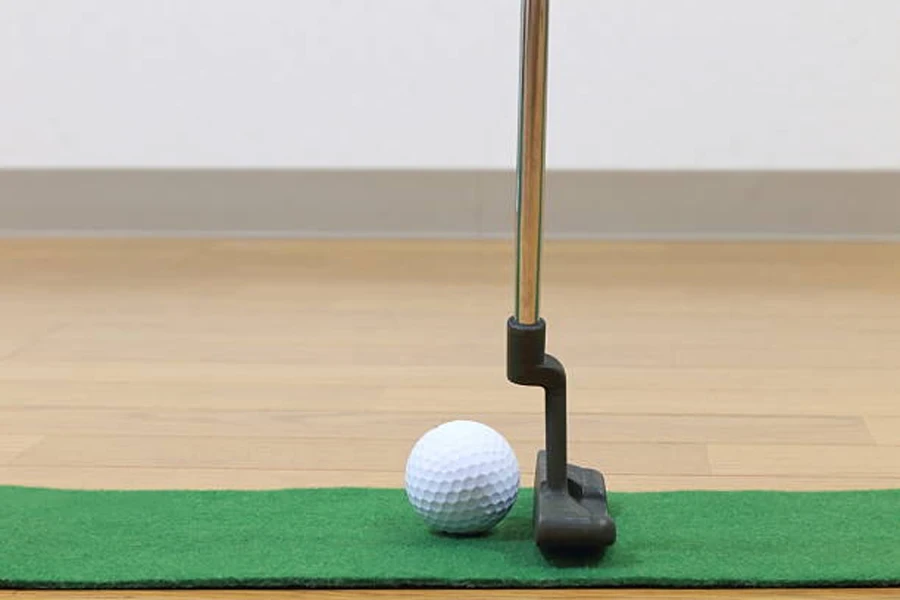
Golf putting mats are very popular among golfers in the off-season and among those who want to practice outside of the golf course in their spare time. Both professional golfers and amateurs are able to take advantage of this golf training tool that allows them to hone in on their putting skills.
One thing is for sure: the popularity of golf putting mats isn’t dying down anytime soon. Visit Alibaba.com to see the extensive range of options available.
